Before you start analyzing competitors’ ads, you need to find tools for yourself with which the study will be as efficient and easy as possible. There are, of course, a myriad of paid tools you can use to help with your Google competitor analysis (as well as the general running of your PPC campaigns), some of which we use ourselves at Atomic Leap. We will briefly describe the services that will help to cope with this task.
#1 SEMrush
SEMrush is a comprehensive digital marketing tool that includes a robust suite of features for competitor analysis, including Google Ads. It is a quick way to see who is advertising on keywords you plan to use, provides insights into your competitors’ ad strategies, ad copies, budgets, and more.
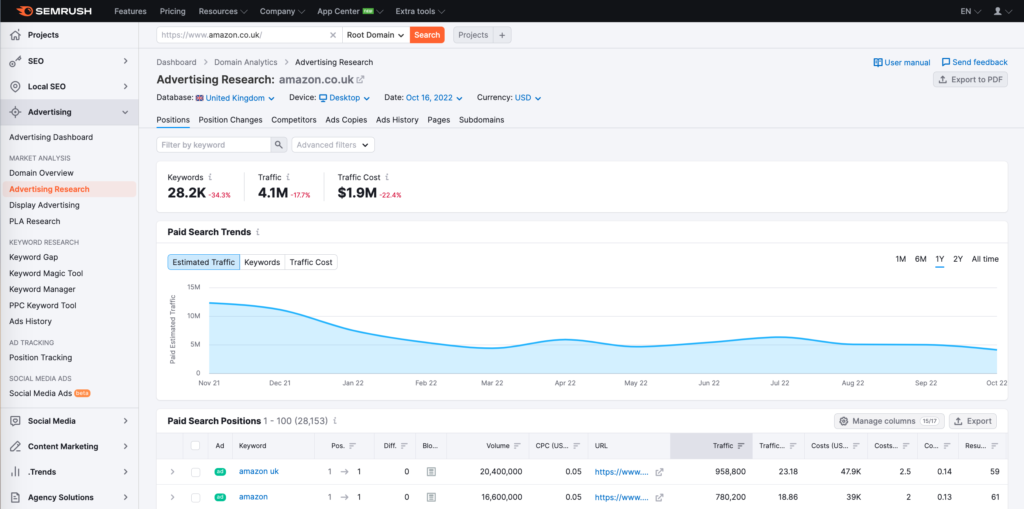
Advantages of Using SEMrush for Google Ads Competitor Analysis
- Comprehensive Data: SEMrush provides a wealth of data about your competitors’ Google Ads campaigns, including the keywords they’re targeting, their ad copies, ad positions, and estimated ad spend.
- Keyword Insights: You can uncover the specific keywords that your competitors are bidding on, allowing you to identify potentially valuable keywords you might be missing. Research keywords in organic results, paid results, and PLA (Google Shopping) campaigns
- Ad Copy Analysis: SEMrush lets you view the ad copies your competitors are using. This can provide insights into their messaging strategies, value propositions, and calls-to-action.
- Ad Position Tracking: You can track your competitors’ ad positions over time, which can help you understand their campaign performance and visibility.
- Budget Estimates: While not always 100% accurate, SEMrush provides estimates of your competitors’ monthly ad budgets, giving you an idea of their investment in Google Ads.
- Competitor Benchmarking: SEMrush allows you to compare your Google Ads performance against your competitors, helping you identify areas where you’re excelling or falling behind.
- Historical Data: You can access historical data on your competitors’ ad campaigns, which can help you spot trends and seasonal changes in their strategies.
- Semrush Free Trial: You can use Semrush with a free account, 7 days of full access to all toolkits.
Disadvantages of Using SEMrush for Google Ads Competitor Analysis
- Pricing: SEMrush can be relatively expensive, especially if you’re looking for more advanced features. SEMrush offers three payment options, ranging from $129.95 to $499.95 per month.
- Learning Curve: SEMrush offers a wide range of features beyond competitor analysis, which might require some time to learn and navigate effectively.
- Data Accuracy: While SEMrush provides estimates, the accuracy of metrics like ad spend and budget can vary. It’s important to use this data as a general guideline rather than an exact figure.
- Limited Real-Time Data: Some data might not be updated in real time, so you might not have the most up-to-date information on your competitors’ strategies.
- Not a Substitute for Creativity: While competitor analysis is valuable, it’s important to remember that your unique value proposition and creative ad ideas are essential for success. Relying solely on competitors’ strategies might limit your innovation.
Remember that tools and their features can change over time. It’s a good idea to explore the latest reviews, guides, and resources related to SEMrush’s competitor analysis capabilities to get the most accurate and current information before making a decision.
#2 SpyFu
An amazing tool to dominate your competition. Service allows you to uncover you the most profitable combination of keyword and ad copy from your competitors on target keywords. SpyFu specializes in competitive research, including Google Ads analysis. It allows you to uncover your competitors’ most profitable keywords, ad campaigns, and budget estimates. You can also track changes in their advertising strategy over time.
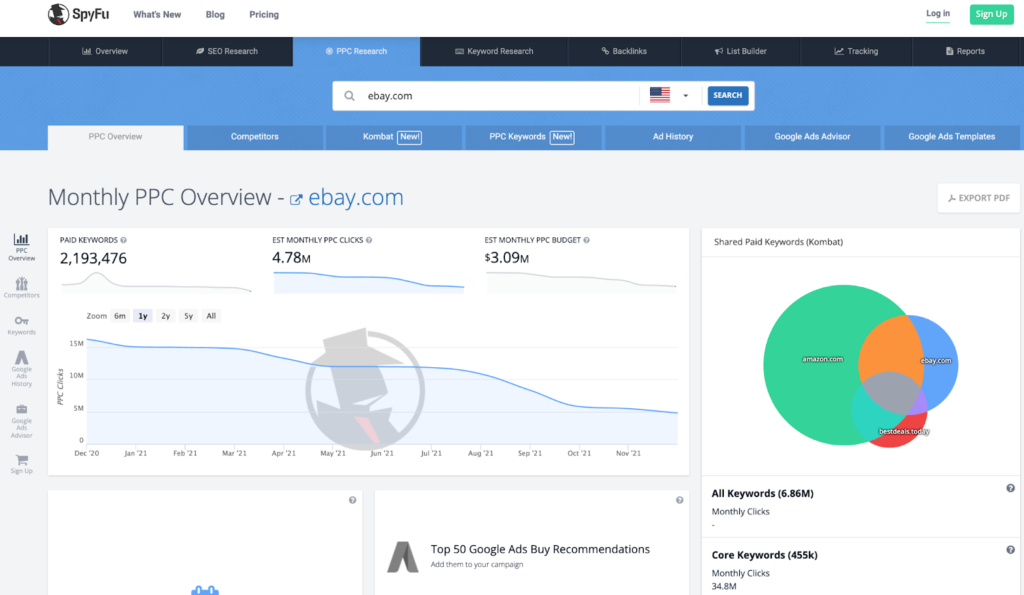
Advantages of Using SpyFu for Google Ads Competitor Analysis
- Comprehensive Competitor Analysis: SpyFu provides a wide range of data, including keywords, ad copies, ad history, and estimated ad budgets, allowing for a thorough understanding of your competitors’ Google Ads strategies.
- Google Ads Advisor: The tool’s feature that analyzes competitors’ bidding history and recommends profitable keywords your campaign isn’t targeting can help you uncover untapped opportunities.
- PPC Negative Match Recommendations: Identifying overly broad keywords that competitors have tried and failed can help you avoid wasting money on ineffective keywords and improve your targeting efficiency.
- Competitor Campaign and Ad Test History: Accessing your competitors’ complete Google Ads campaign history, including ad split test results and unsuccessful keywords, provides insights into their testing strategies and potential pitfalls to avoid.
- PPC Ad Rank Tracker: Tracking keyword ranking progress and impression share while receiving expansion keyword suggestions can help optimize your campaign’s performance and reach.
- Keyword Grouping and Organization: Efficient keyword organization can improve campaign structure and management, leading to better overall performance.
- Custom Reports: Generating customized reports with specific data points can simplify communication of findings and insights to stakeholders.
- Geographic Insights: Understanding where competitors are focusing their campaigns geographically can inform your own targeting strategy and help you identify potentially lucrative areas.
Disadvantages of Using SpyFu for Google Ads Competitor Analysis
- Pricing: Like other comprehensive tools, SpyFu’s pricing can be a concern for smaller businesses or those with limited budgets. SpyFu offers three payment options, ranging from $39 to $299 per month. There is no free trial.
- Data Accuracy: While the estimates provided by SpyFu are valuable, they might not always be 100% accurate, so use them as general benchmarks.
- Limited Real-Time Data: Some data might not be updated in real-time, which can impact your ability to react swiftly to competitor changes.
- User Interface Complexity: Users might find the interface overwhelming, especially when initially navigating the tool’s numerous features.
- Platform Changes: The tool’s effectiveness can be influenced by changes in Google Ads algorithms, policies, or features, which might not be immediately reflected.
#3 Similarweb
SimilarWeb is primarily known for providing website analytics and competitive insights, including data on website traffic, audience demographics, and online behavior. While it’s not as specialized for Google Ads analysis as some other tools, it can still offer valuable insights for competitor analysis. Here are the advantages and disadvantages of using SimilarWeb.
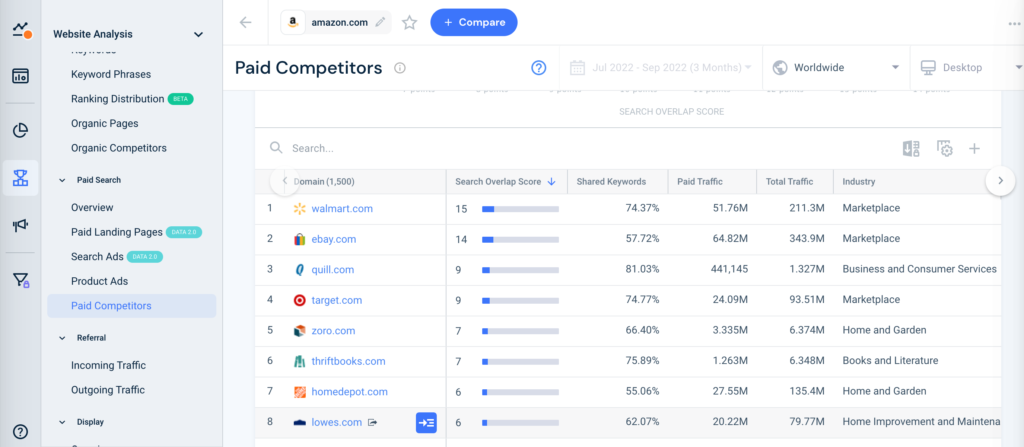

Advantages of Using SimilarWeb for Google Ads Competitor Analysis
- Paid Search Overview: SimilarWeb offers a comprehensive overview of your competitive landscape in terms of paid search campaigns. This allows you to gain insights into when your competitors are running their campaigns and how their strategies change over different seasons or periods.
- Competitive Spending Insights: SimilarWeb provides you with a valuable window into your competitors’ ad spend. You can access estimated ad spend figures across various currencies. This insight is crucial for understanding the financial commitment your competitors are making in their paid search efforts. It also allows you to benchmark your own budget and make informed decisions about resource allocation.
- Keyword Analysis: The PPC Keywords Tool allows you to identify the specific paid, non-branded keywords that are driving the most traffic to your competitors’ websites. This feature can help you uncover high-performing keywords that you might not have considered before.
- Benchmarking: SimilarWeb enables you to benchmark your Google Ads efforts against those of your competitors. This comparison can provide you with actionable insights for improving your campaigns and staying competitive.
- Visual Snapshot: The snapshot provided by SimilarWeb’s Paid Search Overview can offer a visual representation of your competitors’ activities and help you quickly grasp the key trends and patterns.
Disadvantages of Using SimilarWeb for Google Ads Competitor Analysis
- Pricing: SimilarWeb’s more comprehensive features might come at a cost, and the pricing might not be justified if you’re primarily interested in Google Ads analysis. Ranging from $125 per user/month billed yearly (or $149 month-to-month) to $333per user/month (or $399 month-to-month).
- Limited Google Ads Data: SimilarWeb’s primary focus is on website analytics, so its data on Google Ads campaigns might be more limited compared to specialized tools.
- Data Accuracy: SimilarWeb’s data is based on estimates and algorithms, which might not always accurately reflect the actual performance and strategies of your competitors.
- Less Specialized: Since SimilarWeb is not primarily designed for Google Ads analysis, it might lack some of the more advanced features and specific insights offered by specialized PPC tools.
- Lack of Real-Time Data: SimilarWeb’s data might not be updated in real time, so you might not have the most current insights into your competitors’ strategies.
- Learning Curve: While SimilarWeb’s interface is user-friendly, understanding and interpreting the data effectively might require some learning.
#4 Ahrefs
Ahrefs is a favorite among SEO marketers globally, capabilities as a PPC tool are pretty limited.
Utilize Ahrefs’ “Site Explorer” feature to assess your competitors’ endeavors in paid search. Simply input the competitor’s domain, access the “Paid search” section, and leverage Ahrefs’ data to uncover the PPC keywords your competitor is ranking for. Additionally, discover their highest-performing ads and identify the pages responsible for driving the majority of their paid search traffic.

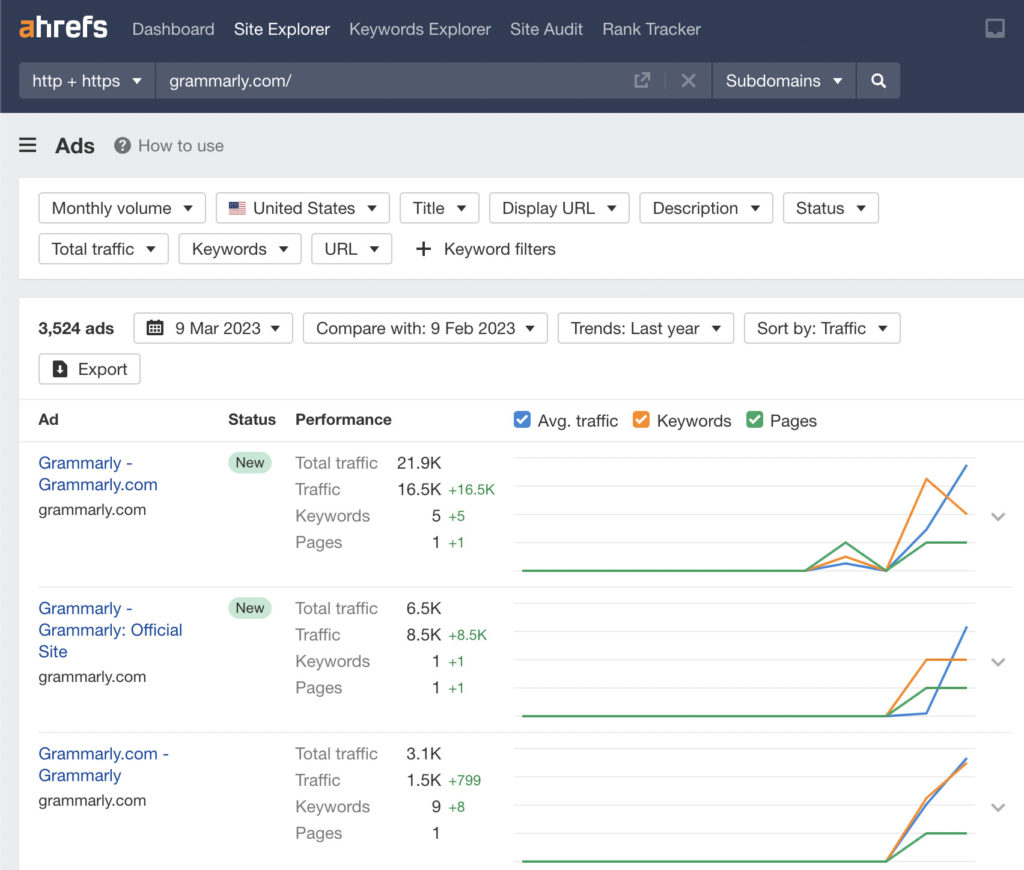
Advantages of Using Ahrefs for Google Ads Competitor Analysis
- Historical Paid Traffic Chart: A key advantage of Ahrefs is its ability to provide a historical chart of paid traffic. This feature allows you to visualize your competitors’ paid traffic trends over time, helping you identify patterns and changes in their advertising strategy.
- Ad Type Insights: Ahrefs enables you to see the specific types of ads that a competitor is running. This insight can help you understand their creative approaches, messaging strategies, and ad formats.
- Detailed Paid Activity Breakdown: The tool offers a comprehensive breakdown of a competitor’s paid activity. This breakdown can include data on the keywords they are targeting, the ad copies they are using, and the performance metrics of their campaigns.
- Ad Description Analysis: By using filters with specific keywords, Ahrefs allows you to analyze your competitors’ descriptions in their Google Ads. This can provide valuable insights into their messaging, value propositions, and calls-to-action.
Advantages Disadvantages of Using Ahrefs for Google Ads Competitor Analysis
- Limitation to Verified Domains: A limitation of Ahrefs is that it allows analysis only for verified domains and their subdomains. This means that you might not be able to analyze all potential competitors if they haven’t been verified.
- Free Plan Limitations: While Ahrefs offers a free plan, some features might be restricted to premium plans. Accessing the full range of tools and features might require a subscription.
- Pricing: A premium subscription to Ahrefs can be relatively expensive, especially for businesses with tight budgets or those that only require occasional competitor analysis. Ranging from £79 to £319 per month (baseline price doesn’t include additional charges that may occur if you exceed your plan’s limits.)
- Learning Curve: Like any powerful tool, Ahrefs might have a learning curve, particularly for users who are new to competitive analysis or digital marketing tools.
Paid tools summary
- SEMrush – solid PPC tool with international support.
- SpyFu – the most accurate tool. Google Ads advisor offers you actionable insights.
- Similarweb – broad tool with plenty of free data.
- Ahrefs – amazing tool for SEO, capabilities as a PPC tool are pretty limited.
If you are not sure if paid PPC tools for competitor analysis meet your needs, read our article How to do competitor analysis in Google ads. Comparing Google Ads competitor analysis with other paid services requires considering the strengths and weaknesses of each approach. Google Ads competitor analysis might be advantageous compared to other paid services.
ABOUT THE AUTHOR
